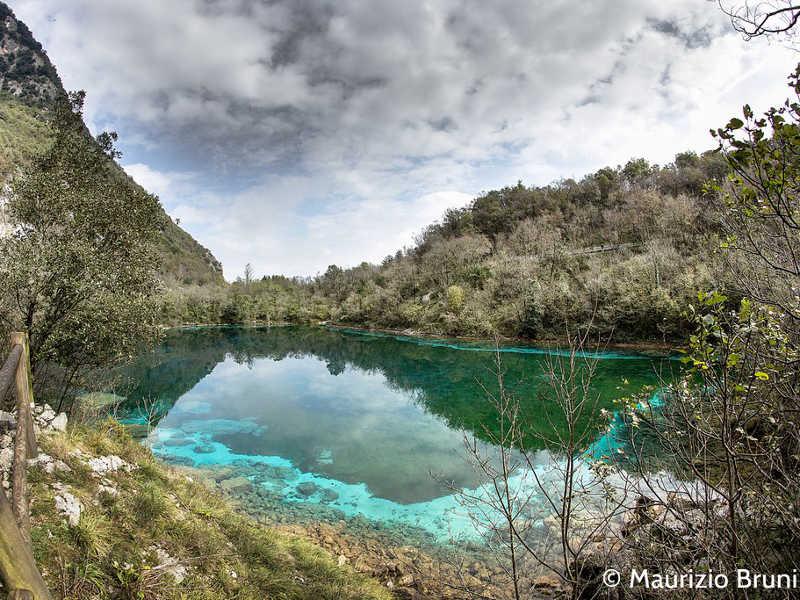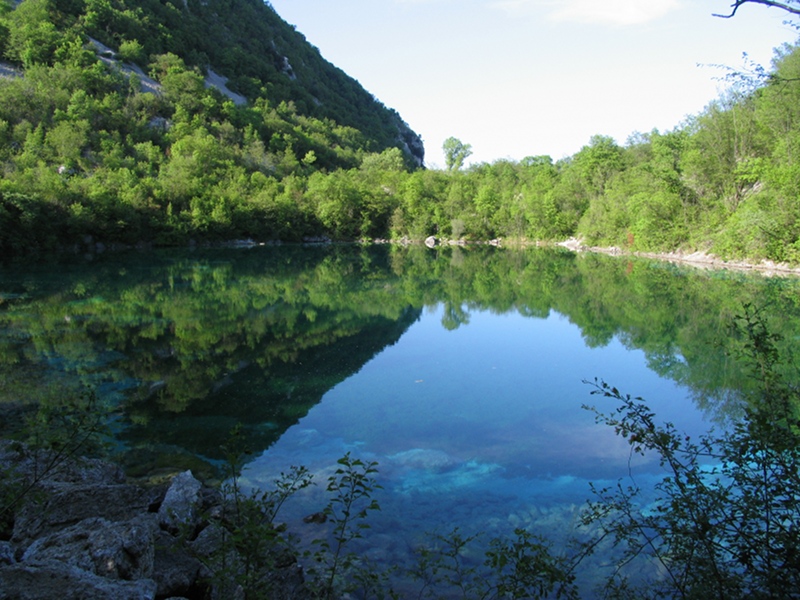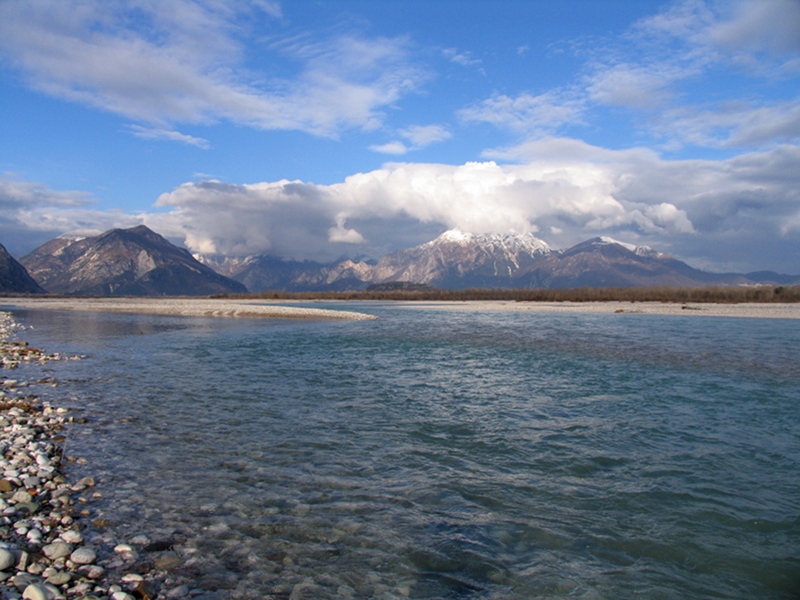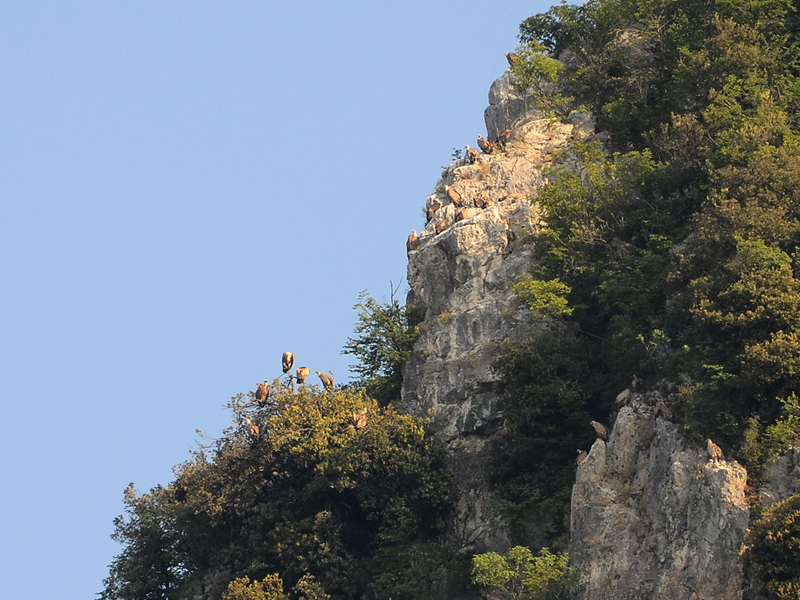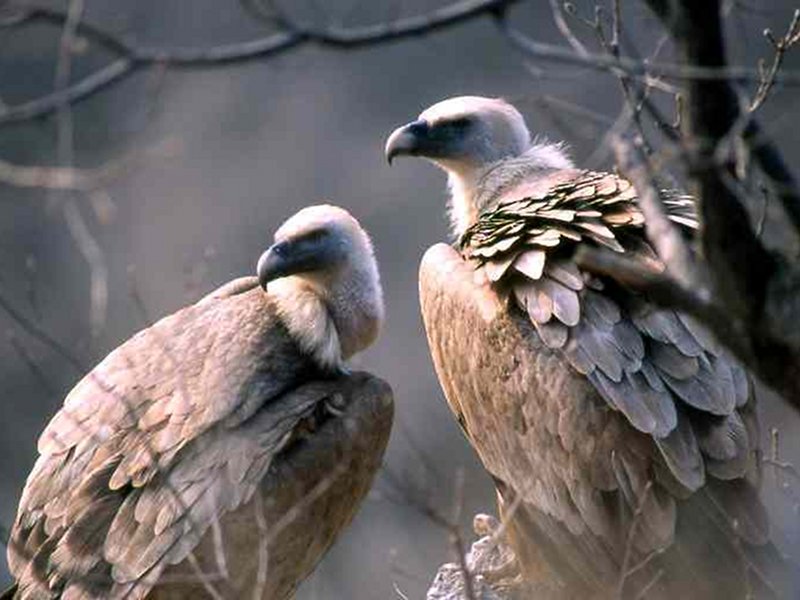Riserva naturale regionale Lago di Cornino
www.riservacornino.itPoints of Interest
Cornino Lake
Cornino Lake is a small stretch of water originating during the glacier withdrawal which took place about 10,000 years ago. In that period, several and imposing landslides involved the slopes of the valleys (up to that moment smoothed by the action of the glacier) that were suddenly deprived of the support represented by the ice mass itself.
The current morphology is the result of one of these landslides with an outer bar enclosing a depression upstream. The bottom of this depression is about a dozen of meters lower than the shore of Tagliamento and the waters of the water table of Piana di Osoppo flow into it crossing the permeable sediments of the ancient landslide.
These waters can be easily distinguished from the waters coming from Prealpi for a chemical "trace" characterizing them: coming from the basin of Tagliamento, they are rich in calcium sulphate obtained from the dissolution of the gypsum characterizing its basin, unlike the prealpine basins. The lake also welcomes waters of various origin coming from the plateau of Mt. Prat.
Tagliamento River
The Tagliamento River is the last great river in Central Europe that still flows freely. Its gravel bed could be seen from the satellite, a real corridor for migrating species that must be protected. Even the area inside the Reserve (about 7 km) is protected. It flows for 170 km from Carnia to Adriatic Sea. The entire basin is rich in biotopes and wetlands and hosts habitats of pan-European importance. It is therefore a very important corridor that allows the passage of materials and species from Mediterranean and Alpine populations. The exceptional diversity of its habitats is enriched by its long proportion of intertwined branches and is maintained by regular seasonal floods. Finally, it hosts many species of insects, amphibians, reptiles, birds and mammals.
The Griffon Conservation Project in Forgaria nel Friuli
The Griffon Conservation Project, started at the end of the 1980s on the Friulian Prealps, aims at fighting the vultures' decline in the Alps and in the Adriatic sea, through food and by trying to encourage new settlements. To achieve this goal, a food point was created and 75 griffons were released. These birds are marked with colored rings and some have transmitters that allow us to follow their movements at a considerable distance. The techniques and strategies used are quite original, being the first project of this kind in Italy. Currently the colony has about 150 griffons in winter and over 200 in spring-summer, when many come from Croatia and other countries such as France, Spain, Bulgaria, Serbia, etc. About 30 couples nest in the middle of Tagliamento Valley. The project is financed by the Autonomous Region of Friuli Venezia Giulia and is managed by the Municipalities of Forgaria nel Friuli and Trasaghis.
The initiative is extremely important not only from a naturalistic and scientific point of view, but also for divulgation and naturalistic tourism, allowing an ever-increasing public to discover the characteristics and the ecological issues of griffons and of many birds of prey. The area is very interesting for birdwatching, as it is visited by numerous species and is located on a migratory route, particularly frequented in spring and autumn.



